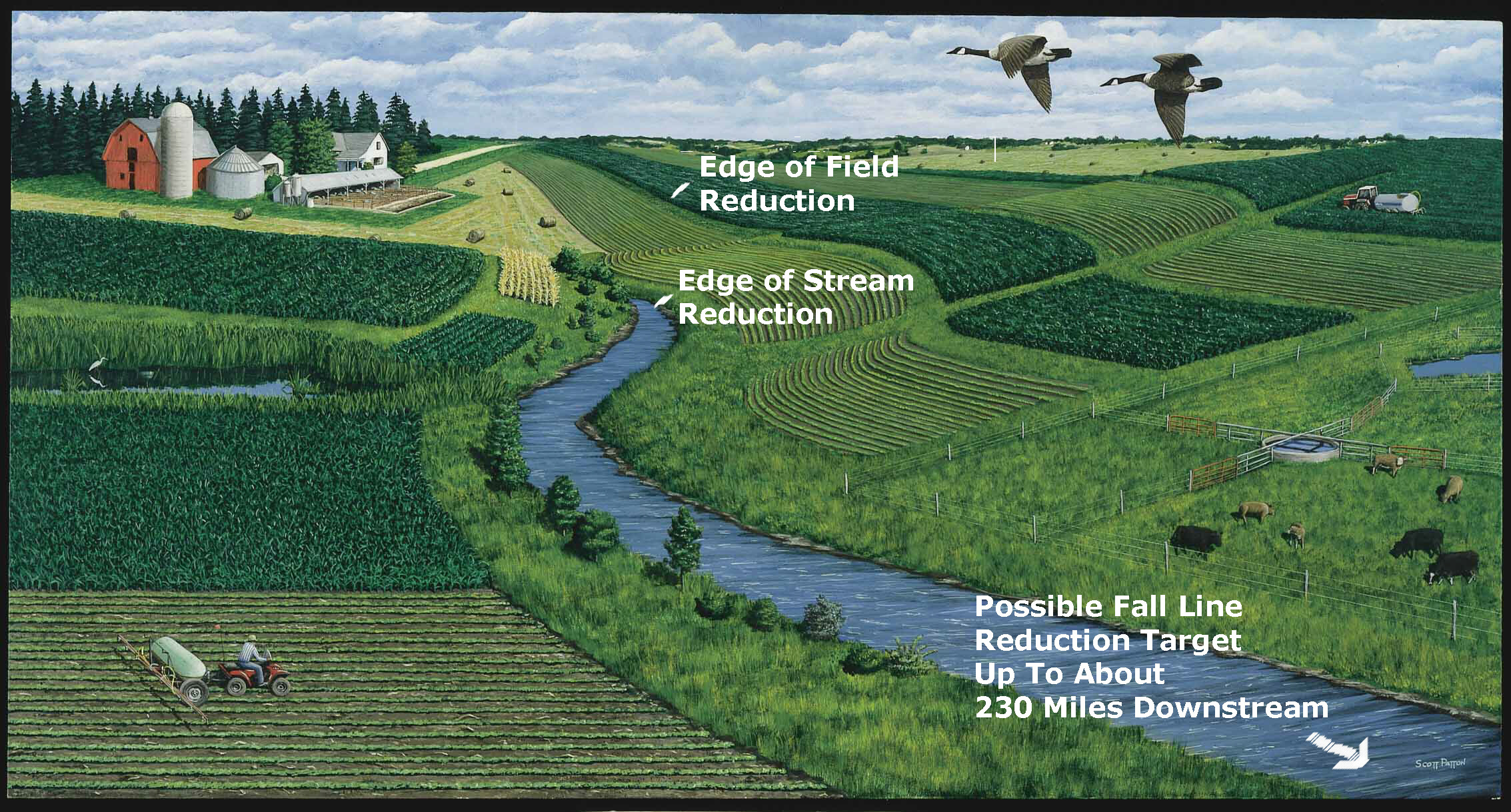
Artwork used courtesy of USDA.
Nonpoint source loading/reduction estimates are an integral part of many conservation and nonpoint source water quality improvement projects. Some types of nonpoint source loadings/reductions are sediment, nutrients, pesticides, heavy metals and other hazardous chemicals, and microorganisms (usually associated with fecal contamination of water). Three common nonpoint source loading/reduction estimate terms used in Virginia are: (1) Edge of Field; (2) Edge of Stream; and (3) Delivered to Fall Line or directly to tidal waters as done by the Chesapeake Bay Program.
Important factors impacting edge of field nonpoint source loading/reduction estimates are soil attributes, type and extent of vegetation, climate, land use, and topography or relief.
Important features impacting edge of stream nonpoint source loading/reduction estimates are the factors mentioned above for edge of field nonpoint source loading/reduction estimates as well as distance to stream (hydrologic connectivity), attributes of the land between the field and stream (slope, soil type, land use, etc.) and other applicable transport factors (transport from edge of field to edge of stream).
Items impacting delivery to the tidal waters (tidal rivers and the Chesapeake Bay) nonpoint source loading/reduction estimates are all of the features mentioned above for edge of field and edge of stream estimates as well as stream attributes, distance to fall line, and in-stream processes and other applicable transport factors (transport to fall line and tidal waters).

The matrix of factors affecting nonpoint source loading/reduction estimates is complex and, usually, modeling is employed to calculate the loading/reduction estimates. It is also important to note that a water quality improvement practice (Best Management Practice) implemented at a given site will produce different nonpoint source loading/reduction estimates depending on the site specific factors that affect the edge of field estimates and what target or term is used to describe the estimated overall nonpoint source loading/reduction. In other words, the nonpoint source loading/reduction estimate value at the edge of the field will be a different amount than that at the edge of the stream, and both of these estimates will be different amounts than the reduction estimate at the fall line for the same implemented practice.
For additional information about nonpoint source loading/reduction estimates please
see the following websites:
Conservation Technology Information Center
Water Quality Information Center
Conservation Effects Assessment Project
U. S. Geological Survey
EPA Ground Water and Drinking Water